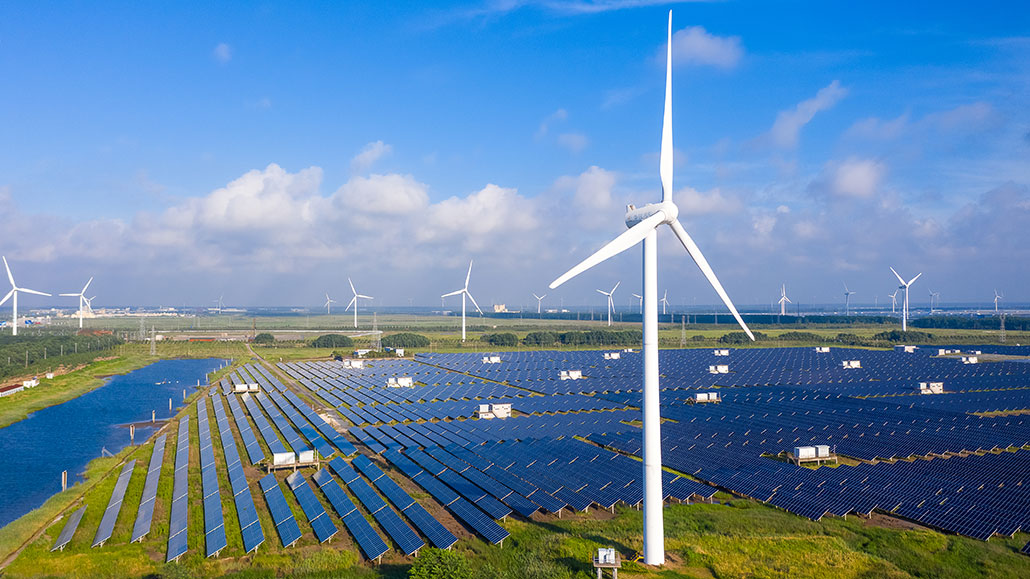Why does Solar energy consider the cheapest and best alternative energy on Earth?
Solar energy often considers one of the most promising and advantageous alternative energy sources on Earth due to several key factors:

Abundant and Renewable:
Solar energy derives from the sun, which is an almost inexhaustible resource. As long as the sun exists, we can harness its energy, making it a renewable source of energy. This ensures a long-term and sustainable energy supply.
Low Operating Costs:
Once a solar power system installs, the operating and maintenance costs are relatively low. Solar panels have no moving parts, which means there is less wear and tear, and maintenance requirements are minimal.
Decreasing Costs:
Over the past few decades, the cost of solar photovoltaic (PV) technology has dramatically decreased. This is due to advances in technology, manufacturing processes, economies of scale, and increased competition in the solar market. As a result, solar energy has become more affordable and cost-competitive with traditional energy sources in many regions.
Energy Independence:
Solar energy allows countries and regions to reduce their dependence on imported fossil fuels, which can be subject to price fluctuations and geopolitical tensions. Generating electricity locally through solar power enhances energy security.
No Emissions and Environmental Benefits:
Solar energy generation produces little to no greenhouse gas emissions or air pollutants, contributing to improved air quality and reduced environmental impact. This is in stark contrast to fossil fuels, which emit pollutants and contribute to climate change.
Modularity and Scalability:
Solar power systems easily tailor to various energy needs, from small residential installations to large-scale utility projects. This modularity and scalability make it suitable for a wide range of applications.
Decentralization:
Solar energy systems installed at various scales, from individual homes to community installations. This decentralization of energy production can reduce strain on centralized power grids and improve energy distribution.
Remote Power Generation:
It harnesses in remote or off-grid areas where traditional energy sources might not be feasible or cost-effective. This can bring electricity to underserved regions and improve the quality of life.
Technological Advancements:
Ongoing research and development in solar technology continue to improve efficiency, storage capabilities, and overall performance, further enhancing its attractiveness as a viable alternative.
Job Creation and Economic Benefits:
The growth of the solar energy industry creates jobs in manufacturing, installation, maintenance, and research. This can have positive economic impacts, particularly in regions transitioning away from fossil fuels.
While it offers numerous benefits, it’s important to note that its effectiveness is influenced by factors such as geographic location, weather conditions, available space, and energy storage capabilities. In some cases, other renewable sources like wind, hydro, and geothermal energy might also be considered depending on the specific circumstances of a given location.
How can solar energy be used as an alternative source of energy?

It can be harnessed and utilized as an alternative source of energy through various technologies and applications. Here are some common ways solar energy is used:
Photovoltaic (PV) Systems:
PV systems, also known as solar panels, convert sunlight directly into electricity using semiconductor materials like silicon. These systems widely used for both residential and commercial applications. Solar panels install on rooftops, facades, or ground-mounted arrays to generate electricity for immediate use or feed into the grid.
Water Heating:
Solar water heating systems capture the sun’s energy to heat water for residential, commercial, and industrial purposes. These systems use solar thermal collectors to absorb heat from sunlight, which then uses to heat water for domestic use, space heating, or industrial processes.
Concentrated Solar Power (CSP) Systems:
CSP systems use mirrors or lenses to concentrate sunlight onto a small area, generating heat that uses to produce steam and drive turbines to generate electricity. CSP often uses for large-scale power generation in regions with abundant sunlight.
Air Conditioning and Solar Cooling:
Solar thermal energy uses to power absorption chillers or desiccant cooling systems, providing air conditioning and cooling without relying on conventional electricity.
Solar Lighting:
Solar-powered LED lights use for outdoor lighting, streetlights, garden lights, and even indoor lighting in areas with limited access to conventional electricity.
Off-Grid Power Generation:
It is particularly useful in off-grid or remote areas. Where it connecting to a centralized power grid might be expensive or impractical. Solar panels combined with energy storage systems (like batteries) can provide a reliable and sustainable power source.
Portable Solar Chargers:
Portable solar chargers and power banks are popular for charging electronic devices like smartphones, laptops, and cameras, especially when you’re on the go or in places without access to conventional power outlets.
Solar Desalination:
It can power desalination processes. Where seawater heats using solar thermal energy to evaporate and separate fresh water. It makes it a potential solution for addressing water scarcity.
Solar-Powered Transportation:
It uses to charge electric vehicles (EVs) and hybrid vehicles, extending their range. It also reduces the reliance on grid electricity for charging.
Solar-Powered Pumping:
Solar-powered water pumps are use in agriculture and rural areas to draw water for irrigation and other purposes. It reduces the need for manual labor or conventional fuel-powered pumps.
Building-Integrated Photovoltaics (BIPV):
Solar panels can be integrated into building materials like windows, roofs, and facades. It allows structures to generate their electricity while maintaining aesthetics.
Space Applications:
Solar energy uses to power satellites, spacecraft, and space stations, where the vast amount of sunlight in space harnesses to generate electricity for various purposes.
The choice of technology and application depends on factors such as geographical location, available sunlight, energy demand, infrastructure, and economic considerations. Advances in solar technology continue to expand the possibilities for utilizing solar energy across various sectors and applications.

